Future SEQ: Gold Coast to lead massive southeast Queensland population growth
MORE than five million people will live in southeast Queensland within five years according to new population data and the Gold Coast will be growing dramatically. Here’s what will be needed to solve the city’s transport woes as our population grows.
Gold Coast
Don't miss out on the headlines from Gold Coast. Followed categories will be added to My News.
THE Gold Coast will be at the forefront of southeast Queensland’s massive population increase, with an extra two million people to live in the region within 25 years.
Just over two million more people will live in southeast Queensland, swelling the number from 3.5 million to 5.5 million — more than currently live in the entire state.
And tourism leaders say fixing the city’s transport network, including the M1 will be critical to the Coast’s future and retaining its position as the nation’s tourism capital.
HOW COAST WILL COPE WITH MILLION-STRONG POPULATION
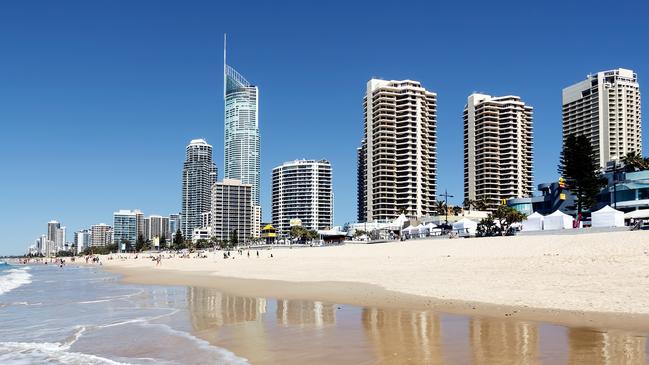
“The southeast Queensland of 2043 will be the same size as Sydney or Melbourne is today,” said leading demographer Bernard Salt who has conducted exclusive research for News Corp’s Future SEQ series.
“It is quickly emerging as Australia’s third global force and, as such, it will offer all the urban amenity and quality you would expect from an urban conurbation of that scale.
“And yet it is quite unlike any other city in the country.”
DON’T FEAR POPULATION BOOM SAYS EXPERT
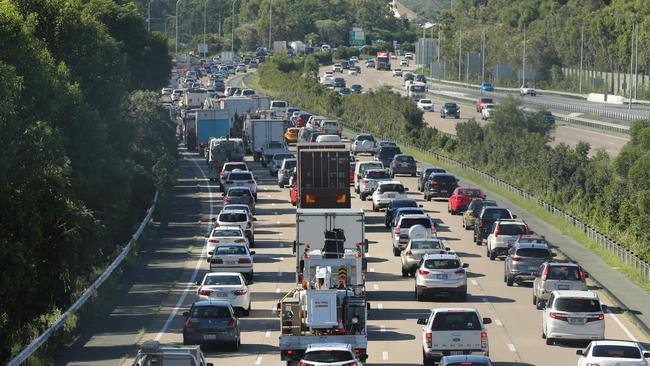
But with this population increase comes the need for improved infrastructure, new developments and more options to move locals and tourists around.
“Infrastructure is critical for growth and tourism and the M1 is obvious – it is critical that all levels of government work together to address it,” said new destination Gold Coast chief executive Annaliese Battista.

“It is all about sustainable planning and it means you can accommodate both tourists and the city’s residents – we need to get ahead of the curve so they can coexist.
“This is going to be critical because tourism is our major economic driver and this will not change for decades.”
Her comments come a year after her predecessor Martin Winter warned the Gold Coast’s reputation and visitor numbers would be hit by traffic congestion on the Pacific Motorway.
Ms Battista also backed the continued expansion of the Gold Coast Light Rail and the ferry service, which is expected to begin operation by Christmas 2019.
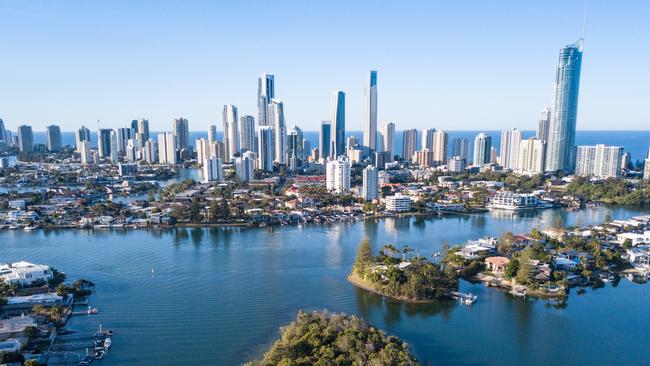
The latest long-term population projections will be published by the Australian Bureau of Statistics next month. But on current trends, the southeast corner will grow by about 80,000 people every year — about twice the rate of OECD countries.
Accommodating the additional people will require 794,000 extra homes by 2043, and 954,000 more jobs will be needed.
Brisbane’s current population of 1.2 million will grow by 29 per cent to 1.5 million by 2043, but both the Gold Coast and Ipswich will add more people than the capital.
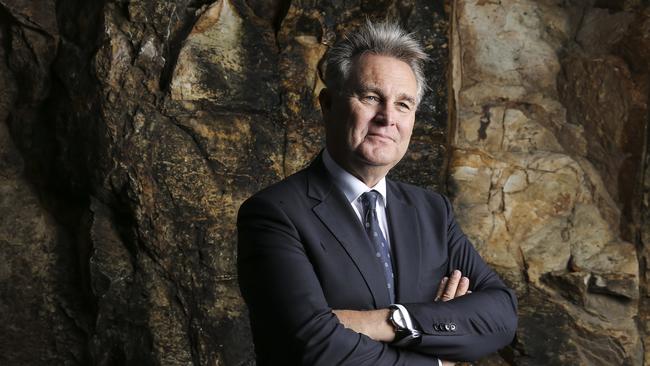
FLASHBACK: COAST’S $4B BOOM PREDICTED
The Gold Coast will leap 427,000 (76 per cent) to about one million, with Ipswich more than tripling from 200,000 to 632,000. Both Moreton Bay and Logan will be larger than the Gold Coast is today.
The Sunshine Coast will rise from 300,000 to 510,00 and Toowoomba from 134,000 to 180,000.
The Coast’s population growth has already been forecast to be even faster, with social researcher Mark McCrindle tipping the city to hit 1 million residents by 2034, nearly a decade earlier.
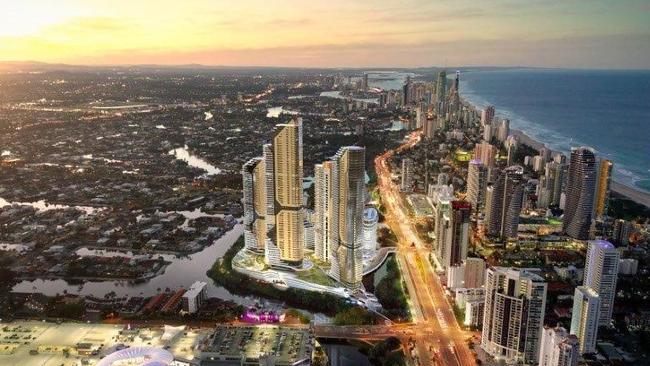
Among the major projects set to bridge the gap between Brisbane and the Coast are the two multi-billion casino developments.
Brisbane’s $3 billion Queen’s Wharf is under construction while contractors will arrive onsite today at the Star’s Broadbeach site to begin construction of its new $450 million tower.
This project will featured both a Dorsett Hotel and The Star Residences apartments.
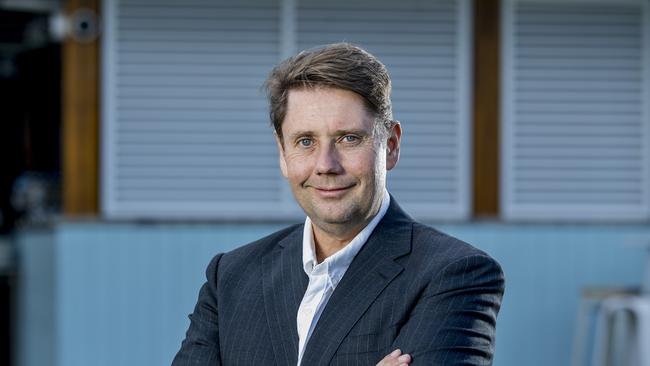
Star managing director Matt Bekier said billions were being invested in the southeast region
“This week, the next stage of the transformation commences with builders on site for the development of the Dorsett hotel tower,” he said.
“A master plan of four further towers on Broadbeach Island also provides an opportunity to create a resort to compare with Queens Wharf in scale.
“As towering tourism beacons, Queens Wharf and a fully developed The Star Gold Coast present a wonderful chance for Queensland to showcase southeast Queensland to the world.”
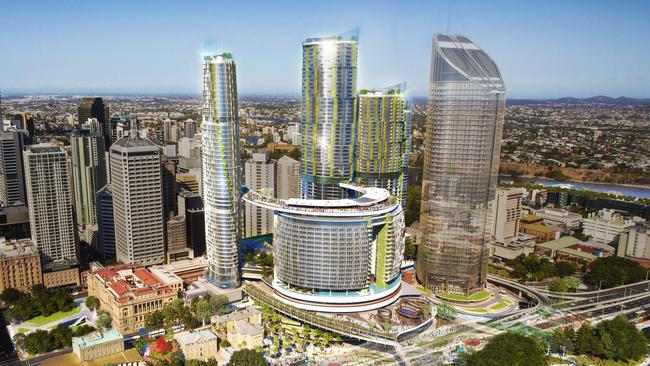
GET FULL DIGITAL ACCESS FOR 50C A DAY
Debbie Smith, Brisbane managing partner of professional services firm PwC, which conducted exclusive research and analysis for the series, warned the surge of people would see “demands grow on current infrastructure and the natural environment, as well as placing pressure on the provision of services.
Density would be the ‘’defining characteristic’’ of SEQ 25 years from now, Ms Smith said.
“In inner-city areas, we expect to see super high-rise buildings functioning as mini-cities and communities — no longer single-use buildings but vertical mixed-use developments incorporating any combination of uses from schools, retirement living, gyms, shops and commercial offices to residential apartments.
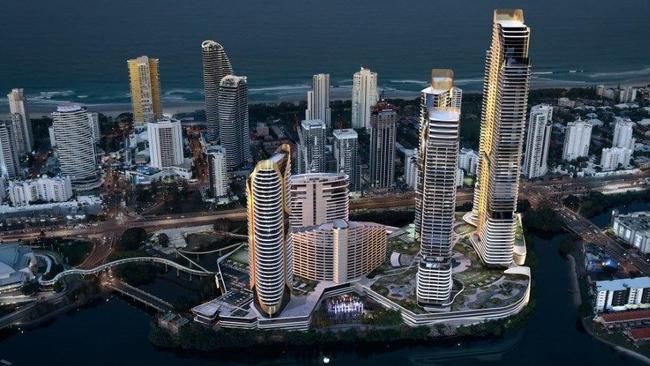
NEVER MISS A MINUTE WITH THE GOLD COAST BULLETIN APP
“Meanwhile, in our middle and outer ring suburbs, we will see a push towards the creation of 30-minute neighbourhoods, where residents can access the a majority of their needs within a 30-minute trip, be it walking, cycling or public transport.
“In our outer ring areas, we will see more upscaled masterplanned communities to accommodate population growth.”
Ms Smith said we were on the cusp of a ‘’step change in transportation” — driven by connected and autonomous vehicles, electric vehicles and ridesharing.
“Other technologies are also set to have an impact such as drones and robotics that could revolutionise the movement of goods.”
But Mr Salt said the largest driver of population growth “will continue to be overseas migration”
Queensland is the only state with uninterrupted positive net interstate migration, including many overseas arrivals shifting here after periods in other states.
Asia will be an enormous influence in shaping SEQ’s future, through both migration and economic opportunities.


